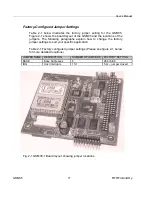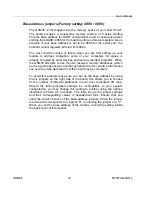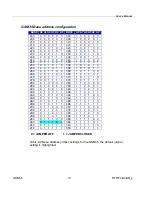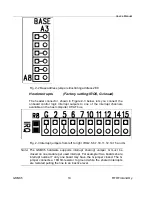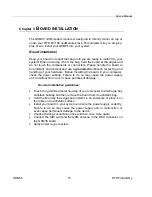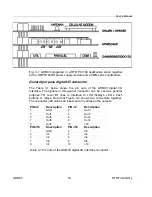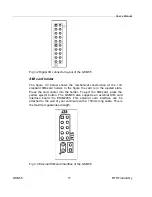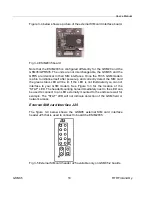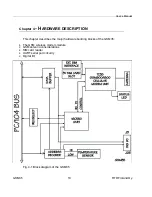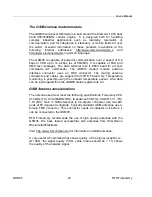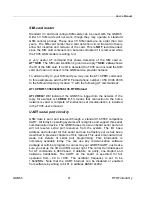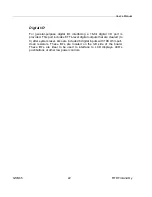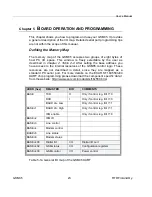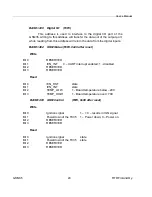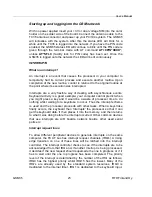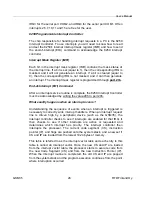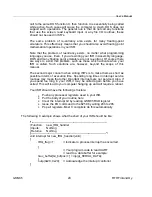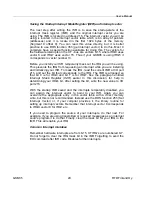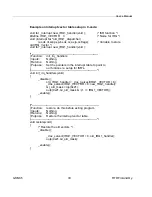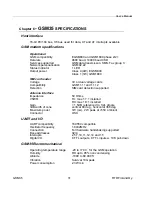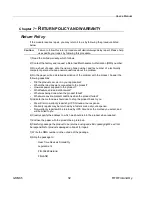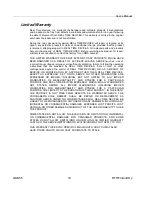
User’s Manual
GSM35
25
RTD Finland Oy
Starting up and logging into the GSM network
With no power applied insert your +3V or dual voltage SIM into the card-
holder on the solder side of the board. Connect the antenna cable to the
TC35 antenna connector and power up your PC/104 system. The GSM35
will initioalise with the system. After this the status LED will blink for a
while until the TC35 is logged into the network. If you have the PIN code
enabled, the GSM35 status LED will continue to blink until the PIN code is
given through the terminal mode with AT command AT+CPIN”XXXX”,
unless AT^SFLC (facility lock for PIN code) has been set. Once the
GSM35 is logged onto the network the LED will be lit continuously.
INTERRUPTS
What is an interrupt?
An interrupt is an event that causes the processor in your computer to
temporarily halt its current process and execute another routine. Upon
completion of the new routine, control is returned to the original routine at
the point where its execution was interrupted.
Interrupts are a very flexible way of dealing with asynchronous events.
Keyboard activity is a good example; your computer cannot predict when
you might press a key and it would be a waste of processor time to do
nothing whilst waiting for a keystroke to occur. Thus the interrupt scheme
is used and the processor proceeds with other tasks. When a keystroke
finally occurs, the keyboard then 'interrupts' the processor so that it can
get the keyboard data. It then places it into the memory, and then returns
to what it was doing before the interrupt occurred. Other common devices
that use interrupts are A/D boards, network boards, other used serial
ports etc.
Interrupt request lines
To allow different peripheral devices to generate interrupts on the same
computer, the PC AT bus has interrupt request channels (IRQ's). A rising
edge transition on one of these lines will be latched into the interrupt
controller. The interrupt controller checks to see if the interrupts are to be
acknowledged from that IRQ and, if another interrupt is being processed,
it decides if the new request should supercede the one in progress or if it
has to wait until the one in progress has been completed. The priority
level of the interrupt is determined by the number of the IRQ as follows;
IRQ0 has the highest priority whilst IRQ15 has the lowest. Many of the
IRQ's are already used by the standard system resources, IRQ0 is
dedicated to the internal timer, IRQ1 is dedicated to the keyboard input,

